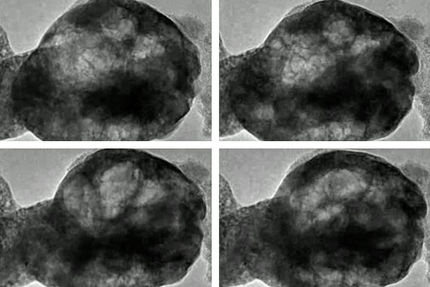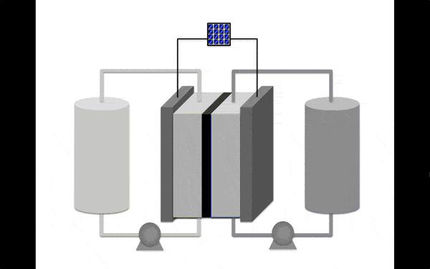Salt is key ingredient for cheaper and more efficient batteries
A new design of rechargeable battery, created using salt, could lead the way for greener Energy. Researchers at the University of Nottingham Ningbo China (UNNC) have joined forces with a specialist group at the Shanghai Institute of Applied Physics (SINAP), Chinese Academy of Sciences on designs for the novel energy store which allows for greater power while also lasting longer than conventional batteries.
Growing demand for electric vehicles and more sustainable forms of transport means finding new forms of energy storage such as batteries, super-capacitators and fuel cells. Currently a major challenge facing the industry is the poor performance quality of rechargeable batteries which often lose energy and power too quickly over time.
The collaboration team is led by Professor Jiangiang Wang, an expert in molten salts chemistry at SINAP, and Professor George Chen, Li Dak Sum Chair Professor in Electrochemical Technologies at UNNC, and has worked to design a possible solution.
The paper, A Rechargeable High-Temperature Molten Salt Iron-Oxygen Battery, outlines research carried out using a novel and affordable rechargeable iron-oxygen battery containing a bi-phase electrolyte of molten carbonate and solid oxide. The first author of the paper, Dr Cheng Peng pointed out that the new design merges the merits of a solid-oxide fuel cell and molten metal-air battery, offering significantly improved battery reaction kinetics and power capability without compromising the energy capacity.
Professor Chen said: "Currently, the major challenge to rechargeable metal-oxygen batteries resides in the sluggish kinetics of electrode reactions, resulting in low energy and power densities. Therefore, activation of the reactions of both the negative and positive electrodes is crucial for high-performance re-chargeable metal-oxygen batteries."
The solution to this challenge as confirmed by the team's work is innovative but simple and low cost. Professor Wang explained: "We looked at elevating the working temperature of the metal-oxygen battery using metals such as iron as a base as this can be activated at a high temperature and keeps the cost low. Solid oxide fuel cells use tin or bismuth as negative electrode materials, but one issue was metal oxides forming between the metal and solid electrolyte and impeding the ion conductivity."
Dr Peng added: "One type of high temperature metal-oxygen battery is the so called molten air battery which can use base metals for fast multiple electron charge transfer in molten salts. The molten salts have the capability to dissolve metal oxides. Our proposal looked at a molten salt iron-oxygen battery with a bi-phase electrolyte of molten carbonate and solid oxide which merges the merits of both types of battery.
"The result was a low-cost and long service life rechargeable high-temperature molten salt iron-oxygen battery with both high energy storage capacity and fast charging and discharging power capability."
The team behind the new design anticipate that the new battery has a great potential application in the area of grid-scale and renewable energy storage. Professor Chen, who is also leading a molten salt electrolysis laboratory in Nottingham, said that the new research behind the battery design has multiple applications. For example, molten salts are the ideal storage fluid for solar heat at high temperatures. Therefore, the molten salt iron-oxygen battery is in principle capable of storage of both the solar heat and electricity, which is very much desirable for both domestic and industrial energy needs.
Original publication
Dr. Cheng Peng, Chengzhi Guan, Prof. Jun Lin, Shiyu Zhang, Dr. Hongliang Bao, Yu Wang, Dr. Guoping Xiao, Prof. George Zheng Chen, Prof. Jian‐Qiang Wang; "A Rechargeable High‐Temperature Molten Salt Iron–Oxygen Battery"; ChemSusChem; 2018
See the theme worlds for related content
Topic World Battery Technology
The topic world Battery Technology combines relevant knowledge in a unique way. Here you will find everything about suppliers and their products, webinars, white papers, catalogs and brochures.

Topic World Battery Technology
The topic world Battery Technology combines relevant knowledge in a unique way. Here you will find everything about suppliers and their products, webinars, white papers, catalogs and brochures.






























































